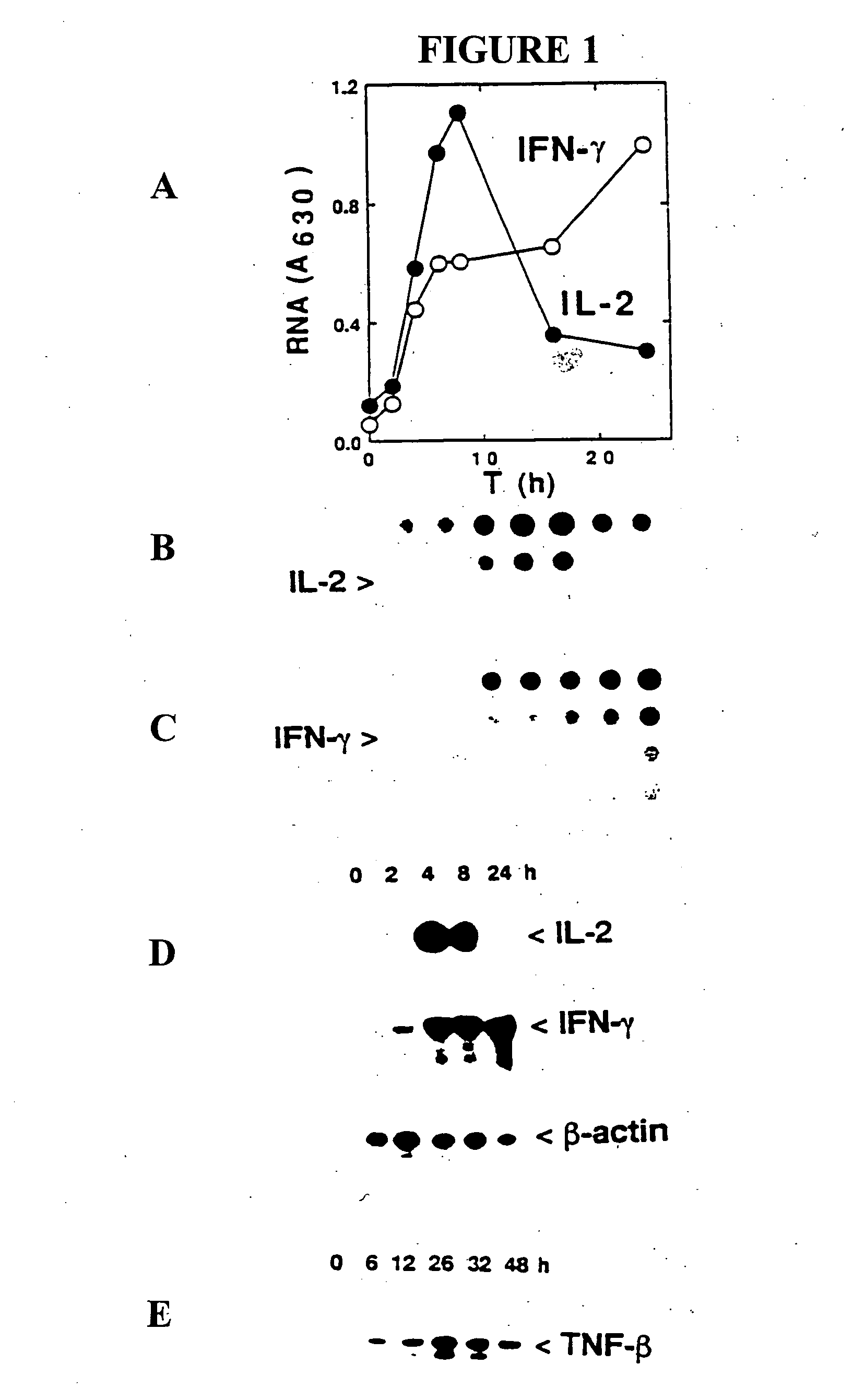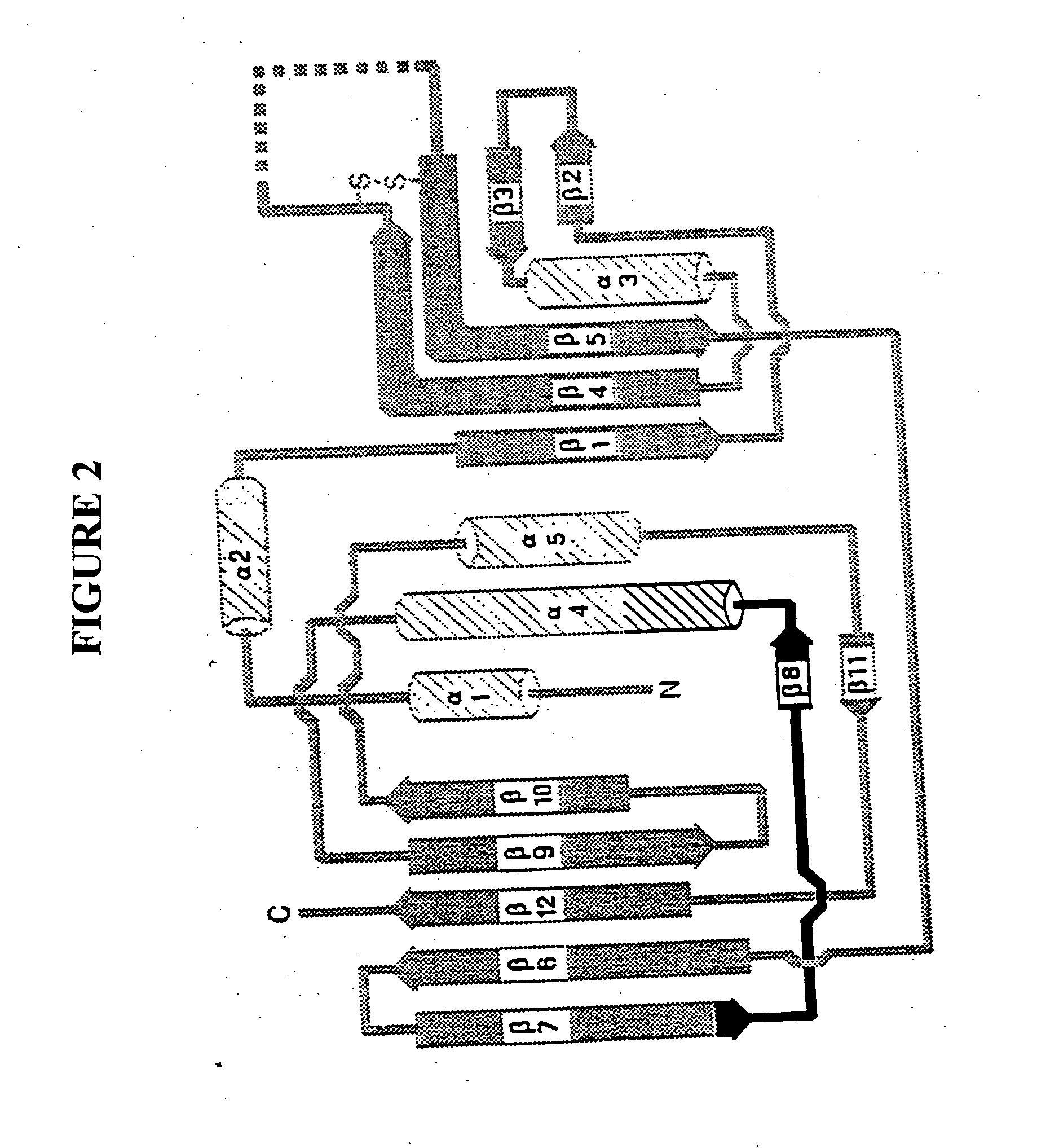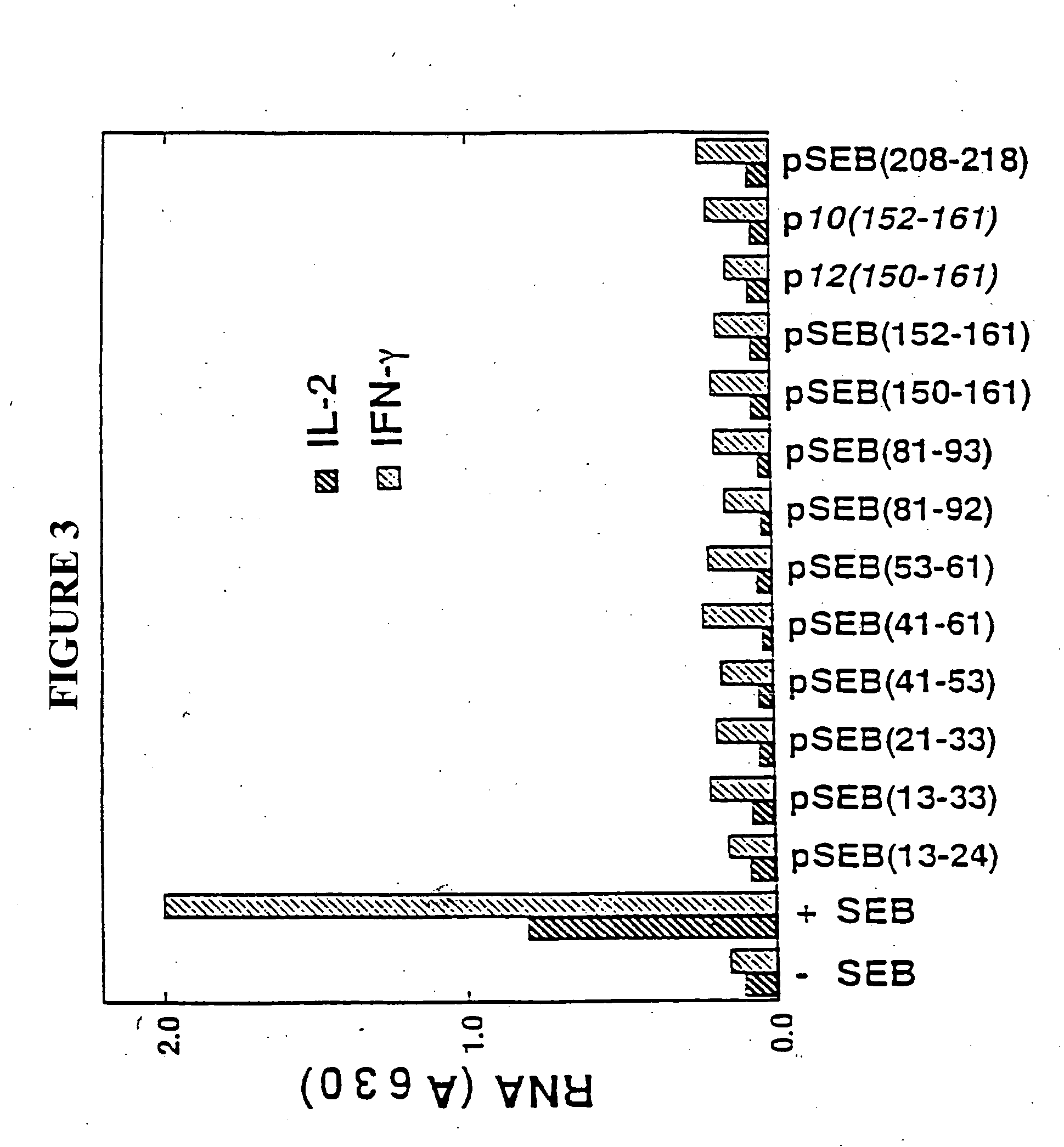Broad spectrum pyrogenic antagonists and vaccines directed against pyrogenic exotoxins
a pyrogenic antagonist and broad-spectrum technology, applied in the direction of antibodies, medical ingredients, instruments, etc., can solve the problems of enhancing vulnerability to conventional military means, affecting the effectiveness of fighting forces, and needing to be generally attacked to achieve the harmful effects of seb
- Summary
- Abstract
- Description
- Claims
- Application Information
AI Technical Summary
Benefits of technology
Problems solved by technology
Method used
Image
Examples
example 1
Induction of IL-2, IFN-γ and TNF-# Gene Expression by SEB
[0206] Peripheral blood mononuclear cells (PBMC) are used to provide a quantitative measure of the primary response of human T cells to an exotoxin, through expression of the Th1 type cytokine genes encoding IL-2, IFN-γ and TNF-β. Gene expression is analyzed within hours after stimulation, providing a more direct and immediate measure of the action of SEB than cell proliferation that results from a complex series of events.
[0207] Exposure of PBMC to SEB leads to induction of IL-2 and IFN-γ mRNA, shown by quantitative dot blot hybridization (FIG. 1A-1C) and RNase protection analysis with a genomic antisense RNA probe (FIG. 1D). Both methods yield similar patterns of induction, characterized by a transient wave of IL-2 mRNA and more prolonged expression of IFN-γ mRNA. TNF-1 mRNA was induced more gradually (FIG. 1E). Patterns of mRNA have thus been documented to reflect the expression of the active proteins.
example 2
Design of SEB-Related Peptides
[0208] Fourteen peptides representing particular SEB domains were synthesized (Table 2; peptides were >95% purity by HPLC) and assayed for the ability to block SEB-mediated induction of IL-2, IFN-γ or TNF-β gene expression. Identification of such a peptide could be useful for developing a peptide vaccine against SEB and more directly, for preventing the harmful effects of SEB on the immune response. Multiple, widely separated regions within SEB interact with the TCR on one hand and with the MHC class II molecule on the other (Swaminathan et al (1992) ibid.; Jardetzky et al, Nature 368:711 (1994)). Domains chosen consist of amino acid residues 13-33, 41-61, 81-93 and 208-218, essential for binding to TCR and MHC class II; residues 21-29 and 48-61, essential for binding to the TCR; and residues 13-17 and 44-52, essential for binding to MHC class II (Swaminathan et al (1992) ibid.). A 12-amino acid SEB domain, made up of residues 150-161, is thought not t...
example 3
Lack of SEB Agonist Activity of SEB-Derived Peptides
[0210] SEB agonist activity of peptides was examined by the ability to induce expression of IL-2 and IFN-γ genes. Even when present in 200-fold higher molar amounts than SEB, no peptide exhibited significant SEB agonist activity, defined as >2-fold increase in RNA over basal level (FIG. 3). When induction of mRNA for IL-2 (FIG. 5) or IFN-γ (not shown) was analyzed by RNase protection, pSEB(41-61), p12(150-161) and pSEB(150-161) again failed to show SEB agonist activity.
PUM
| Property | Measurement | Unit |
|---|---|---|
| time | aaaaa | aaaaa |
| hydrophobic | aaaaa | aaaaa |
| periods of time | aaaaa | aaaaa |
Abstract
Description
Claims
Application Information
 Login to View More
Login to View More - R&D
- Intellectual Property
- Life Sciences
- Materials
- Tech Scout
- Unparalleled Data Quality
- Higher Quality Content
- 60% Fewer Hallucinations
Browse by: Latest US Patents, China's latest patents, Technical Efficacy Thesaurus, Application Domain, Technology Topic, Popular Technical Reports.
© 2025 PatSnap. All rights reserved.Legal|Privacy policy|Modern Slavery Act Transparency Statement|Sitemap|About US| Contact US: help@patsnap.com



